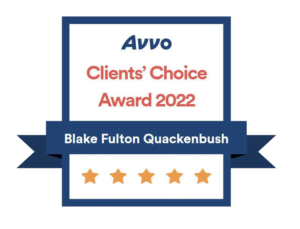Every year hundreds of Alaskans suffer life-changing injuries because another driver ignored the rules of the road. If you have been hurt in a crash on the Glenn Highway, Midtown surface streets, or a rural road outside Anchorage, understanding your legal rights is the first step toward a full financial recovery. This detailed guide explains Alaska car accident laws, insurance requirements, the two-year statute of limitations, comparative negligence, and proven settlement tactics—then shows how an experienced car crash attorney at BFQ Law Alaska can protect you, manage the paperwork, and push for the compensation you deserve.
Table of Contents
➤ Alaska Car Crash Basics and Key Laws
➤ Comparative Negligence and How It Affects Compensation
➤ Two-Year Statute of Limitations for Car Accident Injury Claims
➤ Immediate Steps to Take After a Collision
➤ Common Injuries and Medical Evidence
➤ Insurance Settlement Negotiation Strategies
➤ Calculating Damages: Medical Bills, Lost Wages, Pain and Suffering
➤ Why Hiring a Car Crash Attorney in Anchorage Can Help
Alaska Car Crash Basics and Key Laws
1.1 Mandatory Liability and Uninsured Motorist Coverage
Alaska requires every driver to carry at least $50,000 in bodily injury coverage per person, $100,000 per crash, and $25,000 for property damage under Alaska’s Mandatory Insurance Statutes. If the at-fault driver has no insurance or too little, you may file under your own uninsured motorist coverage pursuant to AS 28.22.201.
1.2 Seat Belt and Child Restraint Rules
Everyone age 16 and older must buckle up under AS 28.05.095, and younger passengers fall under Alaska’s child restraint law, which scales from rear-facing seats to booster seats depending on age and weight, as tracked by Safe Kids Worldwide.
1.3 Crash Statistics in Alaska
Motor vehicle deaths remain a serious public-health problem; nationwide 42,514 lives were lost in 2022, according to the Insurance Institute for Highway Safety. Alaska’s rate of accidental deaths ranks among the highest per-capita states, per CDC accident mortality data.
Comparative Negligence and How It Affects Compensation
2.1 Pure Comparative Fault in Alaska
Alaska follows a pure comparative negligence system. If you are 20 percent at fault for a rear-end collision, your damages are reduced by 20 percent. This rule often surfaces when an insurance adjuster argues that both drivers share blame for distracted driving or icy-road speed choices.
2.2 Evidence That Shifts Fault Allocation
- Police accident report with officer observations
- Witness testimony from passengers or bystanders
- Vehicle damage photos that show point of impact
- Event data recorder (black-box) downloads
Two-Year Statute of Limitations for Car Accident Injury Claims
The statewide deadline for filing a personal injury lawsuit is two years from the date of injury under AS 09.10.070. Missing this window blocks your right to recover pain and suffering, lost wages, or other damages. There are narrow exceptions—for example, if the victim is a minor—but it is safer to assume the clock starts ticking the moment the crash happens.
Immediate Steps to Take After a Collision
4.1 Call 911 and Check for Injuries
Remain calm, secure the scene, and seek medical help right away, as advised by AAA’s post-crash checklist. Prompt treatment creates medical evidence linking your condition to the crash.
4.2 File Your DMV Report
Alaska law requires motorists to submit an SR-13 crash form to the DMV within 10 days for crashes involving injuries, death, or property damage above $2,000. Failure to file can lead to license suspension.
4.3 Preserve Proof for Your Car Accident Claim
- Take photos of vehicle damage, skid marks, and road conditions.
- Exchange insurance information and verify policy numbers.
- Write down witness names and phone numbers.
- Store all repair bills and tow receipts.
Common Injuries and Medical Evidence
5.1 Whiplash and Soft-Tissue Trauma
National Highway Traffic Safety Administration analyses estimate more than 800,000 whiplash injuries occur each year, often from low-speed rear-end impacts. These injuries may appear minor but can generate significant medical bills and long-term headaches.
5.2 Traumatic Brain Injury (TBI)
Even a concussion can trigger memory loss or emotional changes, calling for immediate imaging and neuro evaluation.
5.3 Fractures and Crush Injuries
Broken ribs, wrists, and ankles are common in rollovers, while side-impact collisions may cause pelvic fractures that require surgery.
Insurance Settlement Negotiation Strategies
6.1 Understand the Adjuster’s Playbook
Insurers often start with low offers and count on unrepresented claimants to accept. Consumer guides encourage assertive counter-offers supported by written proof of injuries.
6.2 Document All Losses
- Emergency and follow-up treatment costs
- Physical therapy invoices
- IRS pay stubs to prove lost wages
- Expert opinions on future care needs
6.3 Address Uninsured Motorist Claims
Your uninsured motorist coverage can step in when the at-fault driver’s policy is exhausted under AS 28.20.445.
Calculating Damages: Medical Bills, Lost Wages, Pain and Suffering
7.1 Economic Damages
These include property damage repair costs and any income you lose because your injuries keep you from work.
7.2 Non-Economic Damages
Alaska does not cap pain-and-suffering awards in vehicle crash cases, though you must present convincing testimony about how the injuries affect daily life.
7.3 Punitive Damages
Punitive awards may be available in egregious cases such as a drunk-driving crash, but Alaska law requires clear-and-convincing evidence of reckless indifference.
Why Hiring a Car Crash Attorney in Anchorage Can Help
8.1 Leveling the Playing Field
An experienced Anchorage car accident attorney handles the litigation process, files pleadings, conducts discovery, and prepares for trial while you heal.
8.2 Local Insight and Resources
BFQ Law Alaska’s legal team knows how local adjusters evaluate a personal injury claim and what medical providers are respected by juries.
8.3 Contingent-Fee Representation
Most auto injury lawyers are paid only if they recover money for you, aligning the attorney’s incentives with yours. If you want to discuss your case, use BFQ’s contact form or email blake@BFQLaw.com.
About BFQ Law Alaska
BFQ Law Alaska is located at 807 G Street, Suite 100, Anchorage, AK 99501. The firm’s practice areas span personal injury, family law, civil litigation, wills, trusts & estates, settlement/dispute resolution, and mediation. The attorneys, paralegals, and staff work together to secure outcomes that reflect each client’s goals.
Frequently Asked Questions
Most firms, including BFQ Law Alaska, handle accident cases on a contingency fee—typically one-third of the recovery plus costs. No fee is owed if no money is recovered.
Even what seems like a “fender bender” can lead to hidden injuries or future medical bills, so an initial consultation can protect your rights.
You generally have two years from the collision date to file suit under AS 09.10.070.
The majority of motor vehicle accident attorney cases settle, but BFQ prepares every file as if a jury will decide the outcome.
Your claim may proceed against your own uninsured motorist policy under AS 28.22.201.
Conclusion
Pursuing fair compensation after a crash involves strict deadlines, complex insurance rules, and persuasive evidence. A qualified car crash attorney can help you file on time, prove negligence, and fight for every dollar of medical bills, lost wages, and pain and suffering you are owed. If you or a loved one has been injured, reach out to BFQ Law Alaska today to discuss your options.








